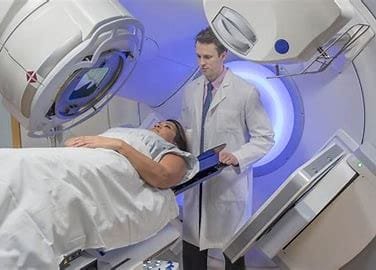Radiotherapy is otherwise known as radiation therapy and is used as a method of therapy to kill or damage cancerous cells. It is perhaps one of the most common ways of treating cancer—the amount of tumor growth is controlled and helps alleviate symptoms, thus improving the patient’s quality of life. This article attempts to reveal the uses, side effects, and benefits of radiotherapy so that patients and their care providers understand very well how it works and may be impacting the patient.

How Radiotherapy Works
Ionizing radiation is normally in the form of X-rays and gamma rays. Other types of treatments for cancer include protons. Radiotherapy is one of the methods that damage the DNA of the cancerous cells by causing damage that leads to a disruption of their growth and division; they, thus, end up dying. Healthy cells may be affected as well, but the damage can recover very well since it is less harmful compared to that which occurs in cancerous cells. This selective targeting makes radiotherapy a powerful treatment against cancers.
There are two major forms of radiotherapy, which include:
External Beam Radiation Therapy (EBRT):
The most common one, where a beam is sent precisely from the outside of the body to the tumor from a machine.
Internal Radiation Therapy (Brachytherapy):
This is wherein a radioactive source is placed within the body near or within the tumor, which enables high doses of radiation in a focused area.
Uses of Radiotherapy
Radiotherapy is versatile and can be applied at different stages of cancer treatment:
In others, such as prostate, breast, or head and neck cancers, radiotherapy may be used to eradicate cancer cells, so it may potentially be curative in itself. It can be used alone, with surgery, or with chemotherapy.
Preoperative or Postoperative Treatment:
Radiotherapy is used as neoadjuvant treatment given before surgery to make the tumors smaller and easier to resect or as adjuvant treatment, conducted after surgical resection to clear the microscopically present remnants of cancer cells, thereby reducing recurrence.
Palliative Care:
Radiotherapy is helpful in managing advanced or metastatic cancers due to the effects of tumors pressing onto nerves, bones, or other organs, which cause pain and other manifestations. Quality of life is improved in this patient without necessarily curing the patient.
Combination Therapy:
Radiotherapy is often given in addition to other treatments, such as chemotherapy (chemoradiation), to improve response. In some cases, it has been proven that for some types of cancers, outcomes are best optimized by adding the destruction of cancer cells to the killing of these cells.
The Treatment of Benign Conditions:
For benign conditions, radiotherapy can sometimes be used, including certain brain tumors or vascular malformations. Here, it can reduce the symptoms and even recover function.
Advantages of Radiotherapy
Radiotherapy comes with many advantages, and it is an integral part of contemporary cancer treatment.
Targeted Therapy: Radiotherapy is so focused that it damages cancer tissues and brings relatively less harm to other normal tissues. The latest techniques of radiotherapy have advanced the accuracy more by techniques like intensity-modulated radiotherapy (IMRT) and stereotactic radiosurgery (SRS).

Non-invasive and Painless:
Most of the external radiotherapy treatments are non-invasive. Patients don’t experience any form of pain during the sessions. This is easier to handle for those who cannot even step into a surgical room.
Particularly for cancers such as prostate, cervical, and head and neck carcinomas, the level of success has been extremely high with radiotherapy, often controlling or even curing these diseases early in the disease course.
Relief of Symptoms in Advanced Cancers.
Radiotherapy often remarkably eases pain and other symptoms in patients who have no hope of cure, so the quality of life is improved for advanced cancer patients.
Adaptable to Other Treatments
Radiotherapy can be integrated with surgery, chemotherapy, and immunotherapy, hence adaptable to and able to complement other approaches of treatment that maximize the treatment effectiveness.
Side Effects of Radiotherapy
Even though radiotherapy is helpful, there is a negative impact, which may be the side effect; this mainly results because the radiotherapy impacts cancerous and normal cells.
There are many side effects varying with the treated area, dosage, and personal factors, including.
Irritation of the Skin:
Irritation of the skin on the treated area is one of the most common side effects of external radiotherapy. It may become red, dry, or even just simply irritated. Some individuals develop peeling and blistering that are typically resolved once treatment is completed.
Fatigue:
Patients typically are highly fatigued during and following treatment, and this can persist for weeks or even months. This tiredness is mainly caused by the reaction of the body to heal from radiation exposure.
Hair Loss:
Radiotherapy will result in hair loss in the area that the radiotherapy is being delivered to the head or neck; hair will typically return, though perhaps looking or feeling different.
Gastrointestinal Symptoms:
Patients with abdominal or pelvic area treatment will experience nausea or diarrhea and changes in appetite while the radiation will impact the digestive organs.
Risk of Secondary Cancer:
While it is rare, exposure to long periods of radiation may eventually lead to secondary cancer many years after exposure.
The risk is very low and is often linked with the benefits of the primary treatment of cancer.
Organ-specific side effects:
The side effects depend on the organ that is irradiated; for example, if the lungs or heart are being exposed to radiation, then difficulty breathing or chest pain. Techniques such as IGRT help reduce this exposure.
Reducing and managing side effects
The doctors can predict in advance for a patient what the side effects will be based on the dose of radiation and the treatment area. The methods to reduce these effects include:
Radioprotective Agents:
There are some drugs that can provide protection to the normal tissues from radiation damage.
Fractionation:
Total dose administered in a series of small daily doses allows healthy cells to rest and recover between treatments.
Advanced Radiotherapy Techniques:
Techniques like IMRT and IGRT allow precise targeting, thus avoiding damage to the surrounding normal tissues and limiting side effects.
Medical doctors also administer supportive care that includes antiemetics once the patient exhibits nausea, topical preparations for reaction in the skin, and advising on management of fatigue that smooths the patient in the anguish of the side effects.
Conclusion

Radiotherapy is an integral and impressive part of the treatment of a cancer patient due to its versatility, high precision, and efficacy. It is regarded as fundamental in curative and palliative care. Side effects are unavoidable; however, further development of techniques will continue to increase the safety and effectiveness of radiotherapy. In a patient who receives personalized care and support measures, it can target the cancerous cell successfully without impairing the quality of life.



